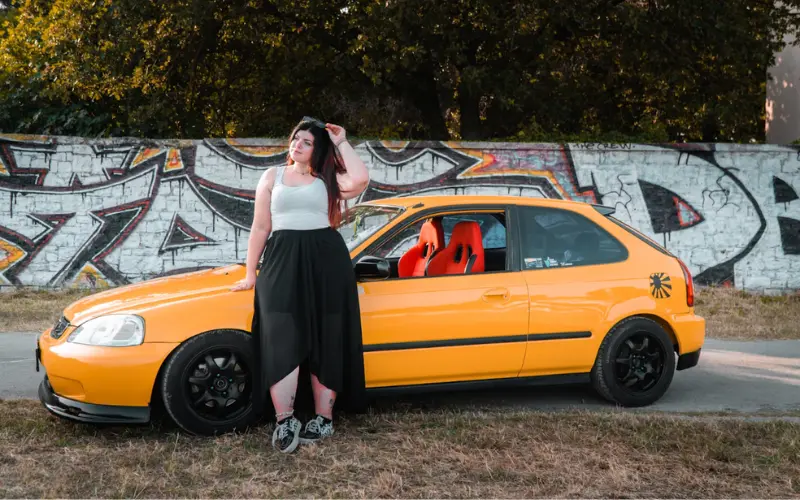It’ll be your first car, and you’ll never forget that feeling of freedom! By the time you’re a student, buying your first car can be part of a rite of passage. For many, it’s the first time you can afford to choose and point at what you want.
There are so many makes, models and engine sizes, but if you rush in, the entire thing confuses – and with what could be the biggest purchase you’ve ever made, you’ll be looking at your new wheels virtually every day for the next three years at least.
Article Summary
How To Choose A Student’s First Car
So, what has to be considered before you get behind the wheel and get ready to hit the open road? Get ready to give it some gas and choose a set of wheels that’ll help you cruise through your student years with confidence.
1. Assess Your Needs
If you’re a student looking to select a first car, you will start by figuring out what you need the motor to do: how often you are likely to drive, what sort of journey you are likely to take, and what parking options are available.
If campus and a steady commute dominate your week, you might want a compact car that is easy to park and kind to your wallet at the pumps. If you find yourself ferrying around too many extracurriculars, maybe a part-time job or two, then good mileage and reliable transport will become a priority.
The right car can make a big difference to your daily university life. The proper academic support can do the same. With the assistance of a UKWritings essay service, you will no longer have to spend hours researching never-ending assignments at the wrong instants. Writing platforms can be an excellent complement to your student life.
2. Set a Budget
Money management is a problem that has to be coped with when you’re a student and are choosing your first car. Here are four main points you need to bear in mind about drawing up your budget:
Purchase Price: Think about how much you can afford to pay as a down payment on the car.
Ongoing Costs: Factor in the expenses for fuel, insurance, regular maintenance, and potential repairs.
Used Cars: Choose a used car because they are cheaper to buy and insure.
Cost vs Functionality: Based on the car qualities that you’re looking for, decide how much you want to spend; choose a car with sufficient qualities for a vehicle that will work without causing your cost to break your budget.
Pay attention to these issues and you should be able to find the first car that ticks all your boxes and still leaves a few pounds in the bank.
3. Research Reliability and Costs
As per the latest research, the size of global market for used cars in 2022 was valued at $1.66 trillion and expected to grow at a CAGR of 6.1% between 2023 and 2030 due the the used cars three costing lower then new one. It shows that car market is blooming and expanding world wide.

However, when searching for what model and price range suit your requirements and budget, you should look at the buying price and the long-term costs of maintenance and repairs. Look up customer reviews and reliability ratings for makes and models you’re interested in.
Research fancy vehicles and compare the price of spare parts and typical repair jobs with those of more affordable models, which will help you understand all the long-term costs.
Consider Fuel Efficiency Nowadays, with fuel price you’ll need to seriously take into account its fuel economy. Make sure you check the miles per gallon (MPG) ratings of cars you are planning to buy.
Fuel-efficient cars will save students big on fuel which is so important for their budget. Alternatively a electric of hybrid car will use less fuel in an eco-friendly way.
4. Safety First
Now that regards buying your first car, the safety aspect is usually the one to ponder on the most. In this essay, I want to attempt to identify and discuss some of the factors that should be taken into consideration to make a safe purchase of your first car.
Safety Ratings: Check government or automotive safety agency websites for the car’s ratings.
Airbags: Ensure the vehicle includes front and side airbags for maximum protection.
Anti-lock Braking System (ABS): Look for ABS to help maintain steering control during an emergency brake.
Electronic Stability Control: This feature aids in maintaining control on curves and slippery roads.
That’s why having your car equipped with such safety features and a good rating can help soothe your fears when training a new driver by empowering you and your new driver with greater security.
5. Test Drive and Check
If you locate several cars that meet your criteria, schedule test drives. A test drive is when you drive a vehicle to check how it feels and performs before buying it. It is a great way to see if the car feels comfortable and drivable. It’s also a great time to look for problems – listen for odd sounds, test the car’s brakes, and see if all the electrical work.
6. Finalize the Deal
Pay for the inspection so the mechanic can alert you to any problems underneath the surface and confirm that the car is in good working order. Then, negotiate the price (if it is a private sale). Once satisfied, sign off and ensure all relevant paperwork has been completed – registration paperwork, insurance, and state-required inspections or emissions testing.
Steer Toward Your First Ride
Believe it or not, picking your first car as a student can be a time of bliss and a right of passage. It can also feel like a scary and expensive responsibility. But if you follow these steps when choosing your car, you will make one of the most critical life decisions, making your trip to and from campus and beyond as safe and stress-free as possible.

